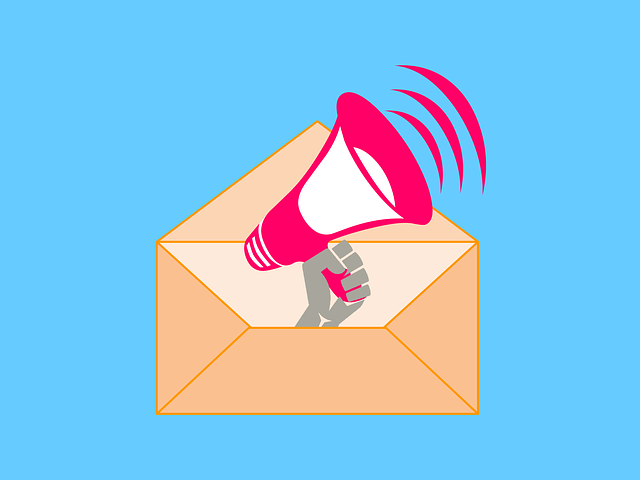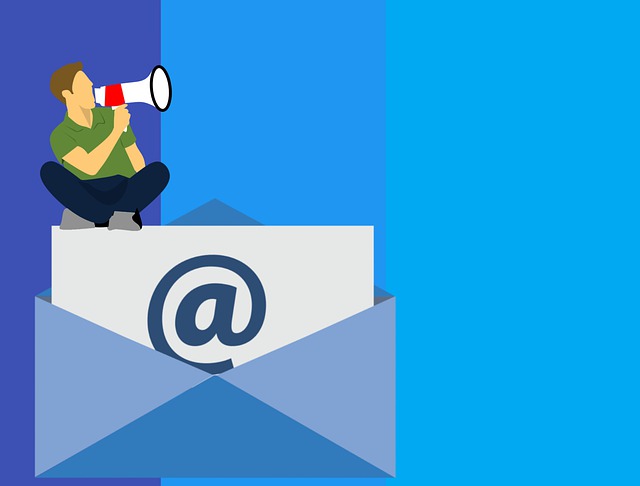Imagine your small business as a ship sailing through the vast ocean of digital marketing. In this vast sea, email marketing is like a compass, guiding you towards success and helping you navigate through the turbulent waters of competition.
Just like a compass, it points you in the right direction, leading you to a treasure trove of loyal customers and increased sales.
Welcome to the comprehensive guide to email marketing for small businesses. In this article, we will equip you with the knowledge and strategies you need to harness the power of email marketing and propel your business forward.
From understanding the basics to creating compelling content, designing eye-catching templates, implementing automation, and analyzing performance, we will cover it all.
So, hoist the sails, set your course, and let’s embark on this journey together. Get ready to discover the secrets of successful email marketing and unlock the potential of your small business.
Key Takeaways
- Email segmentation allows for targeted and relevant content, increases engagement, and reduces the chances of unwanted emails.
- Regularly cleaning the email list helps maintain its quality and reduces the likelihood of recipients wanting to unsubscribe.
- Automation and personalization techniques enhance email campaigns by creating a seamless and personalized experience for subscribers.
- Compliance with email marketing regulations, such as the CAN-SPAM Act and GDPR, is important to avoid penalties and maintain good relationships with subscribers.
Understanding the Basics of Email Marketing
Get ready to take your small business to the next level with the power of email marketing! To make the most of this powerful tool, it’s important to understand the basics.
One key aspect is email segmentation, which involves dividing your email list into specific groups based on criteria such as demographics, interests, or purchase history. This allows you to send targeted messages that resonate with each segment, increasing the chances of engagement and conversion.
Another crucial step is building your email list. Make it easy for visitors to subscribe to your newsletter by placing opt-in forms on your website and offering incentives like exclusive content or discounts.
Now, let’s dive into the next section, where we’ll explore the art of creating compelling email content.
Creating Compelling Email Content
Crafting captivating email content is like weaving a spellbinding story that keeps your readers hooked from the very first sentence, transporting them into a world where their needs and desires are met through your products or services.
To ensure your emails grab attention and drive action, consider these key strategies:
-
Subject line optimization: Craft a compelling subject line that sparks curiosity and entices readers to open your email.
-
A/B testing for email content: Experiment with different email formats, headlines, and call-to-action buttons to see what resonates best with your audience.
-
Personalization: Tailor your email content to each recipient’s preferences and previous interactions with your brand, making them feel valued and understood.
By implementing these techniques, you can create email content that captivates your readers and compels them to take action.
Now, let’s explore how to design eye-catching email templates that will further enhance your email marketing efforts.
Designing Eye-Catching Email Templates
Transform your emails into visually stunning masterpieces with eye-catching email templates that will leave your audience captivated and eager to engage with your brand.
One of the key elements to consider when designing these templates is color psychology. Understanding the emotions and associations that different colors evoke can help you create a visually appealing and impactful design.
Incorporating interactive elements in your email templates is another effective way to grab your audience’s attention. Including features like interactive buttons, sliders, or GIFs can make your emails more engaging and encourage recipients to take action.
Now that you’ve mastered the art of designing eye-catching email templates, it’s time to take your email marketing to the next level by implementing automation and personalization, which we’ll discuss in the next section.
Implementing Automation and Personalization
Enhance your email campaigns by implementing automation and personalization techniques, allowing you to cater to each recipient’s unique preferences and interests. By automating customer journeys, you can create a seamless experience for your subscribers, guiding them through a series of targeted emails based on their actions and behaviors. This not only saves you time but also ensures that your messages are relevant and timely.
In addition to automation, personalizing your email campaigns is crucial in capturing your audience’s attention. Use data such as their name, purchase history, or browsing behavior to create personalized content that speaks directly to their interests. This level of customization helps build stronger relationships with your subscribers and increases the likelihood of them engaging with your emails.
To better understand the impact of automation and personalization, take a look at the table below:
| Benefits of Automating Customer Journeys | Benefits of Personalizing Email Campaigns | Benefits of Combining Automation and Personalization |
|---|---|---|
| Saves time and effort | Increases open and click-through rates | Enhances customer experience and engagement |
| Increases efficiency and scalability | Improves customer loyalty and retention | Drives higher conversion rates and ROI |
| Ensures consistent messaging | Boosts brand loyalty and recognition | Maximizes the effectiveness of your email campaigns |
By implementing automation and personalization in your email marketing strategy, you can create highly targeted and engaging campaigns that deliver results. In the next section, we will explore how to analyze and improve email performance.
Analyzing and Improving Email Performance
To truly understand the effectiveness of your email campaigns, analyzing and improving email performance is essential. Here are four key strategies to help you measure and optimize your email campaigns:
-
Track open rates and click-through rates: Monitoring these metrics will give you valuable insights into how engaging your emails are and which content resonates with your audience.
-
Experiment with subject lines: The subject line is the first thing recipients see, so it’s important to make it compelling and relevant. Test different subject lines to see which ones generate higher open rates.
-
Segment your email list: By dividing your subscribers into smaller groups based on demographics or behavior, you can tailor your content to their specific needs and preferences, leading to higher engagement and conversions.
-
Test and refine your email designs: Make sure your emails are visually appealing and easy to read on different devices. A/B test different layouts and designs to find the optimal format.
By implementing these strategies, you can continually improve the effectiveness of your email campaigns.
In the next section, we will discuss best practices for email deliverability and compliance.
Best Practices for Email Deliverability and Compliance
In order to ensure that your emails land in the inbox of your subscribers, it’s important to follow best practices for email deliverability. This includes maintaining a clean email list, using a reputable email service provider, and avoiding spam trigger words.
Additionally, managing unsubscribes and opt-out requests in a timely and efficient manner will help maintain a positive reputation and comply with email marketing regulations. By staying compliant with these regulations, such as the CAN-SPAM Act, you can avoid penalties and maintain good relationships with your subscribers.
Ensuring Your Emails Land in the Inbox
Don’t be fooled by the illusion of reaching your customers’ inbox; it’s like trying to find a needle in a haystack. To improve email open rates and reduce email bounce rates, you need to follow some key practices.
First, ensure that your email list is clean and up-to-date. Remove any invalid or inactive email addresses to minimize bounce rates.
Second, focus on crafting engaging subject lines and personalized content to grab your recipients’ attention and encourage them to open your emails. Additionally, avoid using spam trigger words and excessive punctuation that may lead your emails to be marked as spam.
Lastly, regularly monitor your email deliverability and engagement metrics to identify any issues and make necessary adjustments. By implementing these strategies, you can increase the chances of your emails landing in the inbox.
Speaking of managing unsubscribes and opt-out requests…
Managing Unsubscribes and Opt-Out Requests
Say goodbye to unwanted emails and give your customers the power to choose what they want to receive. Email segmentation is a crucial strategy for managing unsubscribes and opt-out requests. By dividing your email list into different segments based on demographics, preferences, and behavior, you can send targeted and relevant content to each group. This not only increases engagement but also reduces the likelihood of recipients wanting to unsubscribe.
Additionally, regular email list hygiene is essential to ensure that your list only includes active and engaged subscribers. Remove bounced email addresses and regularly clean your list to maintain its quality. By implementing these practices, you can effectively manage unsubscribes and opt-out requests while maintaining a healthy and engaged email list.
This sets the stage for staying compliant with email marketing regulations and building a strong relationship with your customers.
Staying Compliant with Email Marketing Regulations
Make sure you mindfully adhere to email marketing regulations to maintain a compliant and captivating campaign.
To ensure email marketing privacy and GDPR compliance, follow these guidelines:
-
Obtain explicit consent: Ensure that recipients have given their explicit consent to receive your emails. Implement a double opt-in process to confirm their subscription.
-
Provide clear unsubscribe options: Make it easy for subscribers to opt out of your emails by including a prominent unsubscribe link in every email. Process opt-out requests promptly.
-
Handle personal data responsibly: Safeguard your subscribers’ personal information by implementing robust security measures. Only collect necessary data and delete it when no longer needed.
-
Stay up to date with regulations: Keep yourself informed about email marketing regulations, such as the General Data Protection Regulation (GDPR), and make necessary adjustments to your practices to stay compliant.
By following these guidelines, you can maintain a compliant email marketing campaign while respecting your subscribers’ privacy.
Frequently Asked Questions
How can I ensure that my emails are not marked as spam by recipients?
To ensure your emails aren’t marked as spam, focus on email deliverability optimization and follow best practices to avoid spam filters.
Start by building a reputable sender reputation by consistently sending relevant and engaging content. Use a reputable email service provider that implements authentication protocols like SPF and DKIM.
Avoid using spam trigger words and excessive punctuation in your subject lines and email content.
Regularly monitor your email deliverability metrics and take corrective actions if needed.
What are some effective strategies for building an email list?
Looking to build an email list that gets results? Want to reach the right people at the right time? The key is email segmentation and personalization.
By dividing your subscribers into specific groups based on their interests or demographics, you can send targeted messages that resonate with them.
Personalization takes it a step further by tailoring each email to the individual recipient. With these strategies, you’ll see higher open rates, click-through rates, and ultimately, more conversions.
How often should I send emails to my subscribers?
You should carefully consider the email frequency when sending messages to your subscribers. It’s important to strike a balance between staying in touch and not overwhelming them. Best practices for email subject lines can help increase open rates and engagement.
By testing different frequencies and analyzing the response from your audience, you can find the sweet spot that keeps your subscribers interested without spamming their inbox. Remember to keep subject lines compelling and concise to grab their attention.
What are some key metrics I should track to gauge the success of my email marketing campaigns?
To gauge the success of your email marketing campaigns, it’s crucial to track key metrics. These metrics include open rates and conversion rates. Open rates show how many recipients actually opened your emails. Conversion rates, on the other hand, measure the percentage of subscribers who take the desired action, like making a purchase or signing up for a service.
By monitoring these metrics, you can assess the effectiveness of your campaigns and make informed decisions to optimize your email marketing strategy.
Are there any legal considerations or regulations I need to be aware of when conducting email marketing for my small business?
When conducting email marketing for your small business, it’s crucial to be aware of legal considerations and compliance regulations. These include laws like the CAN-SPAM Act, which requires you to provide an opt-out option and include your business address in every email.
Additionally, you must obtain explicit consent from recipients before sending marketing emails. By adhering to these regulations, you can protect your business from legal issues and build trust with your audience.
Conclusion
In conclusion, you’ve embarked on an email marketing journey that’s both exciting and effective.
By understanding the basics, creating compelling content, and designing eye-catching templates, you’ve set the stage for success.
Implementing automation and personalization has taken your emails to the next level, and analyzing performance has allowed for continuous improvement.
Remember, best practices for deliverability and compliance are vital. So, stay savvy and keep soaring with your small business’s email marketing endeavors!




